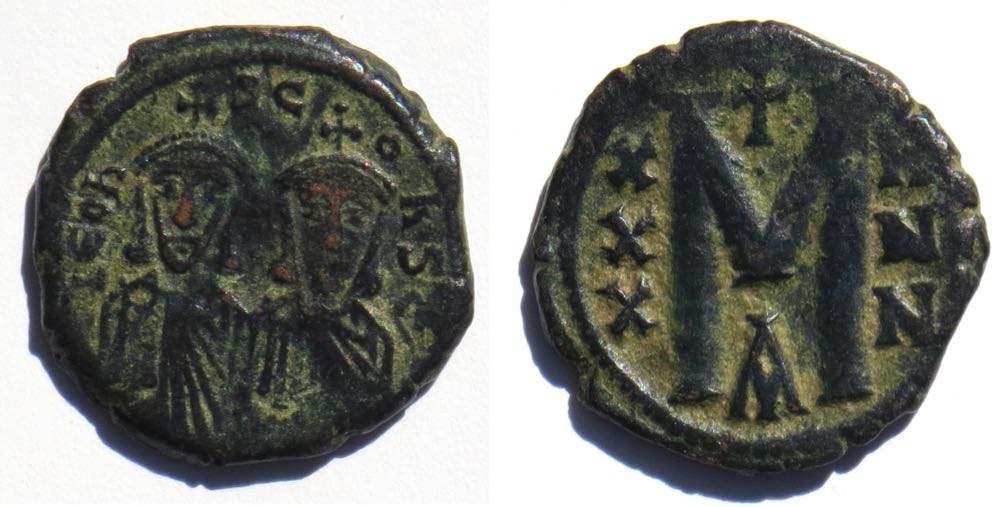 Byzantine coins of Leo III (717-741) and Leo V (813-820)
Byzantine coins of Leo III (717-741) and Leo V (813-820)
 Byzantine coins of Leo III (717-741) and Leo V (813-820)
Byzantine coins of Leo III (717-741) and Leo V (813-820)
A common type of Leo V, Sear 1630 (at right), is often misattributed as a type of Leo III, Sear 1516 (below). They are very similar, but Leo III is a more-interesting emperor and his type is rarer, so the type of Leo III is more desirable. This page explains how to distinguish them.
Their reverse types are almost the same. Both have the "immobilized" reverse with a large "M" for 40-nummia, XXX down its left and NNN down its right and a cross above. Both come with a Greek A below. However, the Leo III reverse also comes with B (Leo V does not) and when it has an A the "A" is rarely bold like it is on the Leo V example to the right.
The important differences are on the obverses: Coins of Leo III have their forearms across their chests and a shorter obverse legend ending "CON" at 9:00, whereas Leo V does not show the forearms and the legend has "S C" at 12:00 and ends "ҺST" at 9:00.
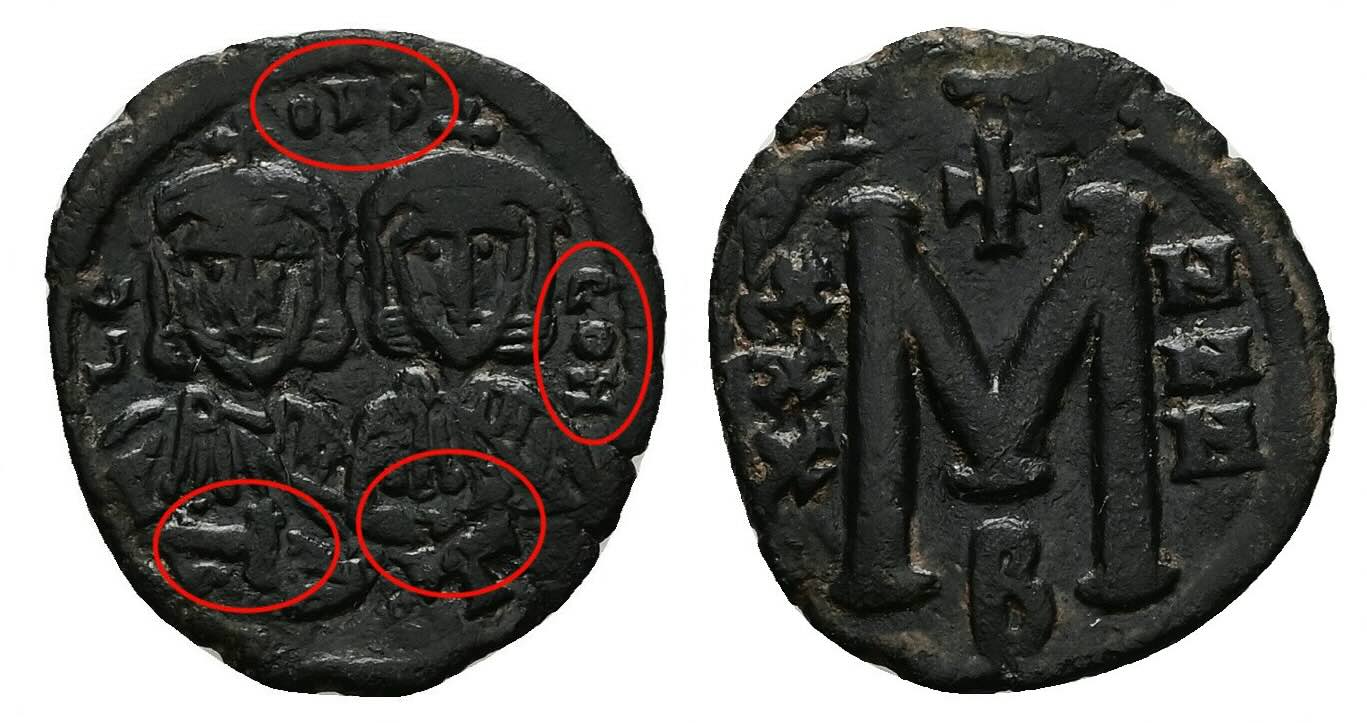 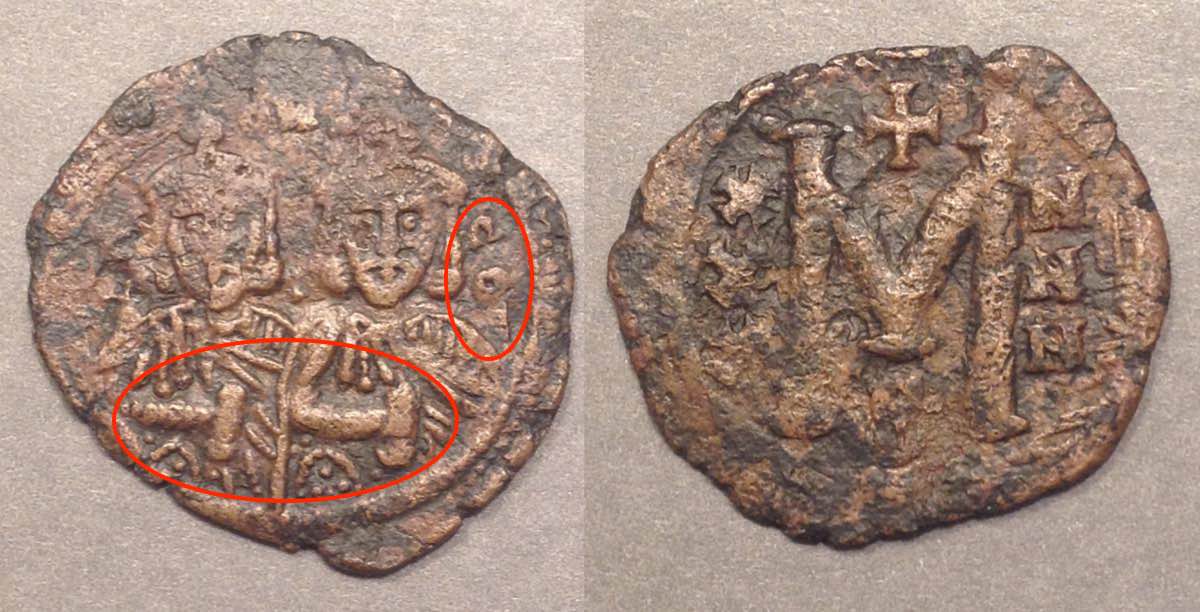 |
Leo III and Constantine V 720-741 Right forearms across their chests hold akakias (much like mappas) Legend LЄ-OҺS-CON ends with CON to the right ["CON" is barely visible on the second example. There is a variety where "LЄ" is not left rather LЄOҺ begins in the middle top.] Sear 1516, pages 286-7. DOC 3.1 38, 39, plate IV, p. 261f. First example: 21 mm and 2.50 grams. Second example: 24-22 mm and 3.86 grams. This type can be much larger or much smaller, anywhere in the range from 16 to 27 mm! |
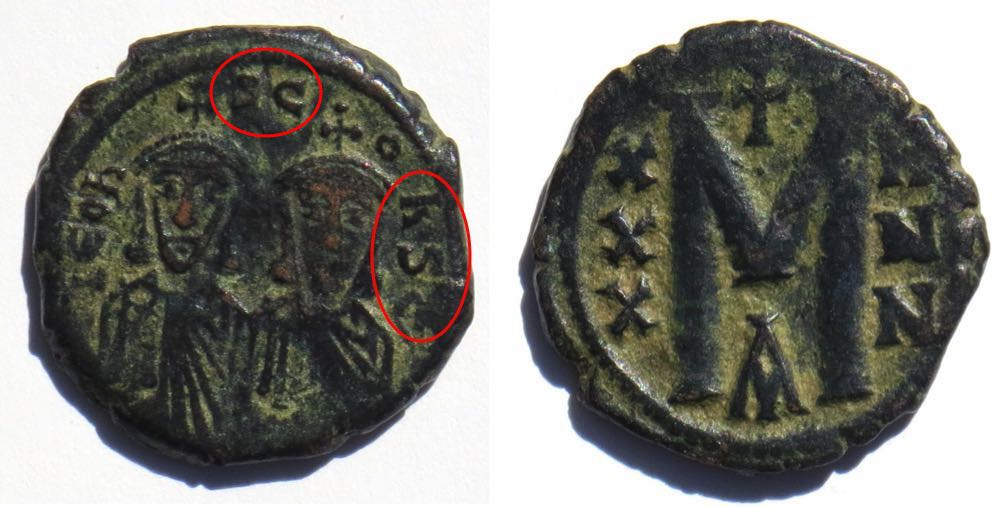 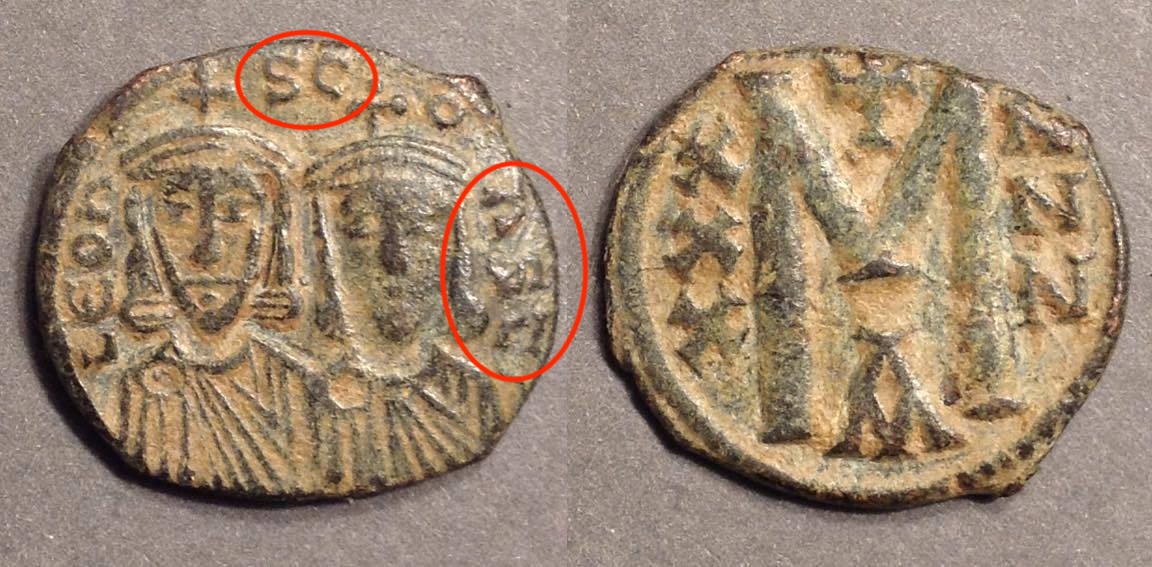 |
Leo V and Constantine 813-820 Right forearms not across chests Legend LЄOҺ-SC-O-ҺST. S C is at 12:00 and ҺST at 9:00. (The T has a curved vertical) Sear 1630 (not illustrated in Sear) 23 mm. This is similar to the most common size of Sear 1516 above. Second example: 20.6-18.2 mm. 4.25 grams. DOC 3.1, 7. Plate XVIII, p. 378f Note: Leo V coins are typically much better struck than Leo III coins. The "SC" is almost always clear and identifies this Leo V type. |
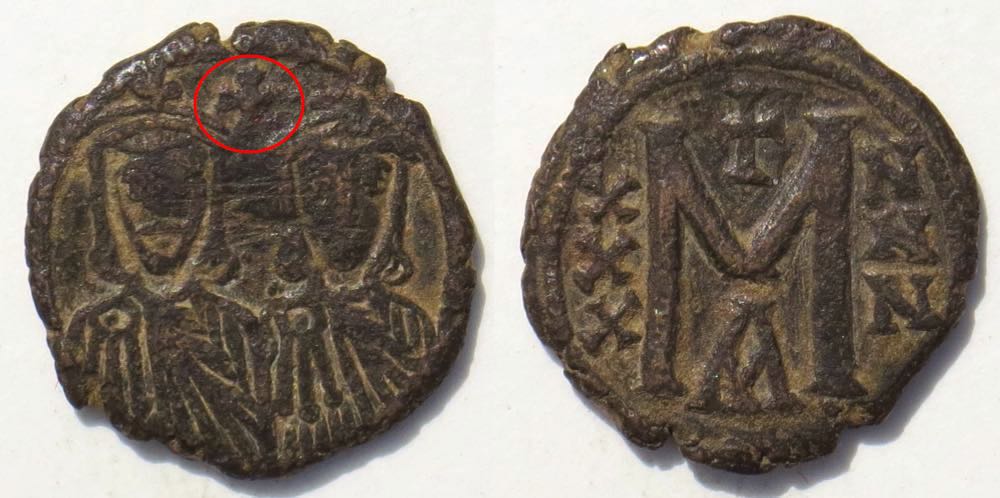 |
Nicephorus I (802-811) and Stauracius (803-811) Right forearms not across chests No legend. Cross at 12:00 between the crosses on the heads. Sear 1607 (not illustrated in Sear) c. 22 mm. This is similar to the most common size of Sear 1516 above. DOC 3.1, 5, plate XVI, page 358 |
Internet sources perpetuated an error. Once some were misattributed, similar examples continued to be attributed to Leo III because internet sources perpetuated the error, even though a close look at a printed source like DOC or Sear would reveal the differences. Leo III initiated iconoclasm and had a far more interesting and historically significant reign than Leo V, so there is incentive to (mis)attribute coins to Leo III. A search (Dec. 15, 2021) on acsearch for "Leo III 1516" yielded 39 misattributed examples and only 4 correctly attributed. A search of the free version of CoinArchives yielded only two, both misattributed. vcoins yielded two, both misattributed. MA-Shops yielded none. CNG yielded two, one misattributed.
Edit: Jan. 7, 2024 I checked all the "Leo III 1516" hits on acsearch added since December 2021. There were 31, 28 of which were really Leo V and only 3 actually Leo III. (Asearch on "Leo V 1630" yielded the first 31 correctly attributed before one was misattributed that was really of Nicephorus I.)
Most examples attributed as Sear 1516 for Leo III are really Leo V coins. I have thought of asking the ancient-coin-database owners to correct this, but I don't think it is worth their while. You can learn and appreciate the difference, even if many sellers do not.
Observations: Sear 1630 (Leo V) is 24-22 mm and usually has much higher quality and its legend, LЄOҺ-SC-O-ҺST, is usually struck well enough so the "S C" at 12:00 is clear. By the way, that "S C" is "S" for "and" and "C" for the first letter of "Constantine". "Leon and Constantine." The legend and lack of forearms across their chests distinguish coins of Leo V.
Sear 1516 (Leo III) almost never has a legible obverse legend (The first coin illustrated is an exception). It is supposed to be "LЄ-OҺS-CON". The Sear plate coin is crowded with only "LЄ" on the flan. Among the eight examples illustrated in DOC 3.1, only one has all the legend (although not clear) and one other has most of the legend. The "N" in "CON" is shaped like "N" and not "Һ" which is its shape in "COҺST" on Sear 1630 of Leo V. (I do not have a font that shows its "T" with the "curved-like-a-C" vertical stroke.)
Sear 1607 (Nicephorus I) is similar to the type of Leo V, but with no obverse legend at all which leaves room for slightly larger figures with the heads almost up against the beading. DOC plate XVI illustrates four examples. Each is well-centered and reasonably well-struck so the lack of legend is clear, as is the cross at 12:00. This type is seldom misattributed.
Further Observations. The Leo III type has two DOC numbers (38 and 39) distinguished by the absence or presence (which is very hard to distinguish) of a beard on Constantine on the right. They have six examples of number 38. Four are numbered 38a from 27 to 21 mm and 6.20 to 3.20 grams. Two are much smaller and numbered 38b, 16 and 15 mm and 1.95 and 0.86 grams.
The Leo III type DOC 39 is more common. DOC has six examples numbered 39a with officina A, all 25-22 mm, and eight examples of 39b with officina B, 27-20 mm and 5.49 to 2.15 mm. If the officina number is "B", it is this Leo III type because the Leo V type only has "A".
DOC has 19 examples of the Leo V type, DOC 7. They are 24-22 mm and 6.31 to 4.21 grams. The sizes are more consistent and the quality of production higher than the Leo III type. Usually the "S C" is clear.
DOC has 8 examples of the Nicephorus I type, DOC 5, 25-22 mm and 6.90 to 3.81 grams.
Photos. Here are the same examples without the red ellipses that mark the distinguishing features.
 Leo III (717-741) and Constantine V
Leo III (717-741) and Constantine V
720-741
21 mm. 2.50 grams
LЄ-OҺS-CON ends with CON to the right
Sear 1516
DOC 3.1 39. The Leo III type has two DOC numbers (38 and 39) distinguished by the presence or absence of a beard on Constantine on the right, which is often, as here, hard to distinguish. I give this one number 39 because it is more common, not because the beard is clear. Two of the DOC examples of 38 have much smaller flans--c. 16 mm. Struck 732-735 if Constantine is beardless (DOC 38) and 735-741 if bearded (DOC 39). Usually the condition is not good enough to tell the difference and Sear does not distinguish them.
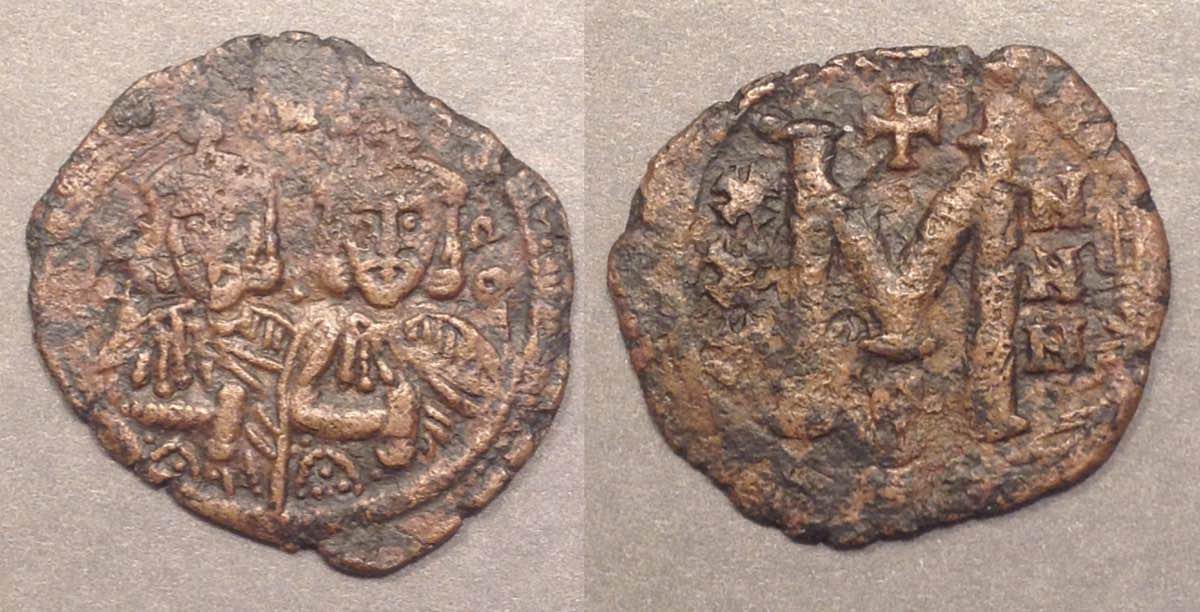
Leo III (717-741) and Constantine V
720-741
23-20 mm. 2.87 grams.
LЄ-OҺS-CON ends with CON to the right
Sear 1516

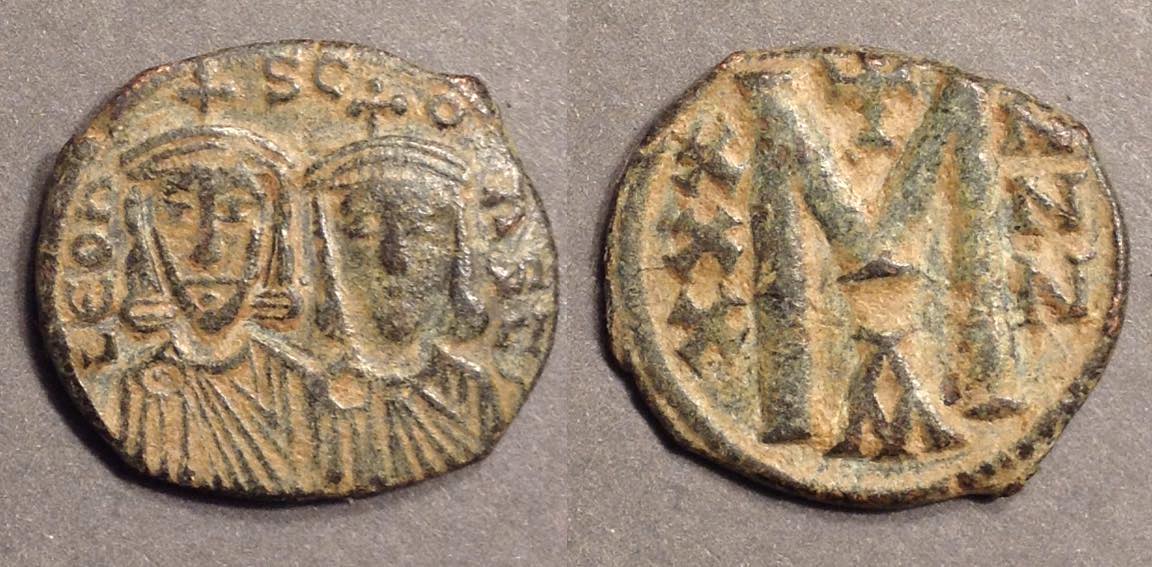 Another one.
Another one.
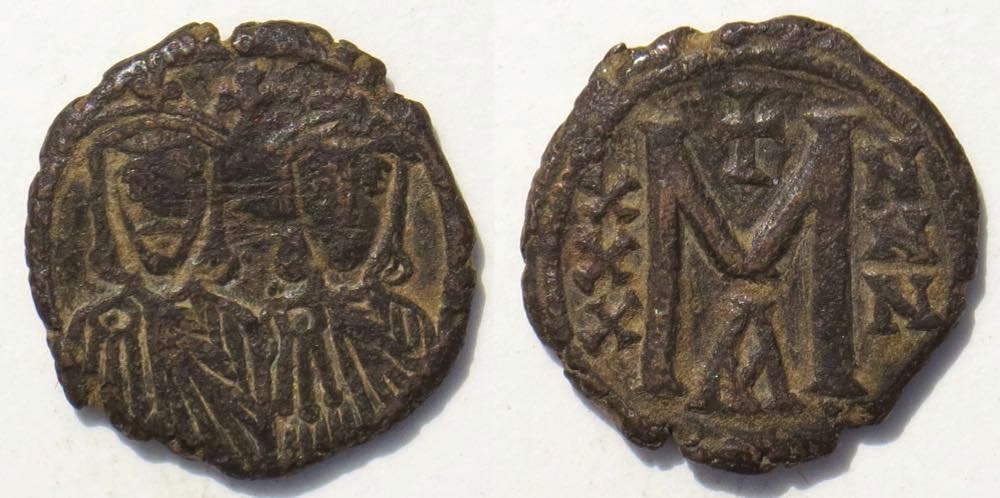
Nicephorus I (802-811) and Stauracius
803-811
22 mm. 5.49 grams.
Sear 1607
It is clear there is no legend and a cross between their heads.
Go to the Table of Contents for this educational site.
Go to the page, "Introduction to Byzantine Coins."